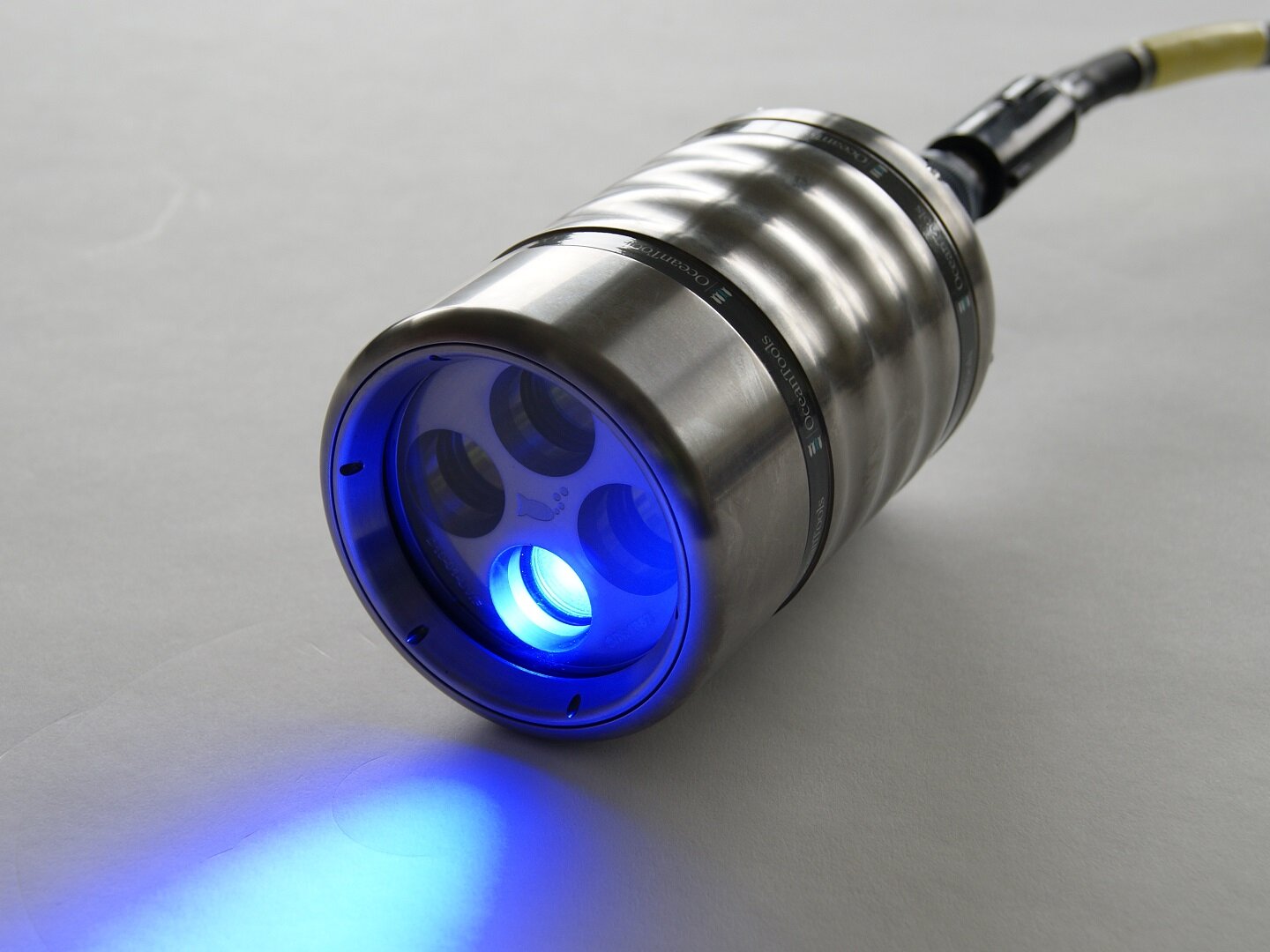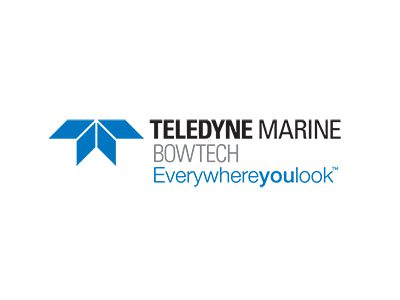BlueZone partners with over 50
world-leading original equipment
manufacturers and systems providers
D8 DyeTector
Dual channel subsea dye detection system
OceanTools D8 DyeTector is an advanced subsea leak, dye and cement detector developed with two sets of optical components to detect two different types of dye using a single compact device. One set of optics is activated at a time, so that rhodamine or ultraviolet dyes can be detected in isolation.
High-power LED light is focused through lenses and filters to create a concentrated beam that is tuned to a specific wavelength to cause maximum fluorescence of the dye. Detection electronics employ clever light amplification technology to amplify even the smallest amounts of fluorescence from the agitated dye molecules.
The powerful ROV mounted D8 DyeTector uses the same technology capable of detecting single photons of light as the single channel D7 DyeTector, which enables it to detect down to single digit parts per billion of dye dissolved in water. This makes it ideal for detecting the very smallest of leaks or dye dosed cement.
Advanced ambient light suppression technology allows the DyeTector to be used in high levels of background light and also means the ROV’s lights do not need to be turned off.
Key Features:
-
Rhodamine and Ultraviolet dye detection
-
Focused beam and filtered high intensity LEDs
-
Light amplification and photon detection technology
-
Compact alternative to using separate detectors
-
4000m standard depth rating
Subsea infrastructure
A DyeTector may be used to detect leaks from subsea infrastructure such as manifolds, wellheads or pipelines if a suitable dye has been added to the infrastructure fluids. Pipeline or flow line pressure testing can be monitored by the DyeTector if dye impregnated fluids are used.
The video footage below, provided by our customer UBOC in Baku, shows the discharging of the 20” pipeline hydro test water in the Caspian Sea at a depth of 60m. A successful leak test was undertaken at stable pressure and temperature. Shown in the video is the purge of the dye solution from the pipeline, carried out to check the correct functioning of the D8 DyeTector. The excitation of the dye is clearly visible at the point where the purge water intersects with the UV light.
Cement detection
A DyeTector may also be used during casing cementing operations to detect cement returns if a tracer dye is added to either the seawater spacer or to the cement itself. Unlike pH meters which rely upon the cement passing over them, a DyeTector can detect cement from a distance of several metres depending on the concentration of dye.
Detection dyes
The D8 DyeTector is designed to excite and detect C-Dye 530 (Rhodamine) and C-Dye 370 (Ultraviolet) but can also be used to detect the following:
-
Rhodamine dyes such as B275, RX9022, Pelagic 100 Pink
-
Ultraviolet dyes such as RX9026E, Pelagic 100, Champion Cleardye, Castrol HT2
OceanTools DyeTector D8 in operation
List of Detectable Dyes and Fluids
For more information about OceanTools D8 DyeTector, Contact the team at BlueZone.
Key Features
Up to 25-hour mission duration
Speeds up to 4.2 knots
Increased module payload capacity
Search and recovery
Hydrography
Deep sea mineral exploration
Marine & Fisheries research
Product Enquiry
Related products
OceanTools C7 Light Ring Camera
The C7 range of multipurpose subsea observation cameras have an integral high intensity controllable light ring to illuminate the underwater environment, and a Wide Dynamic Range to provide clear video...
Read moreSIDUS Solutions’ Mini Inspector unites an image rich, high clarity inspection camera with integrated, variable intensity, sealed high-bright LEDs.
Read moreBowtech has designing, manufacturing and supplying products to the subsea ROV, AUV, Defence, Nuclear and Leisure markets for over 20 years. From patented designs through to unique manufacturing techniques, Bowtech...
Read moreRelated Articles
Ahead of the Tide: A Year of Milestones and Momentum- A Letter from the Director
By Neil Hodges, Managing Director, BlueZone Group As 2025 draws to a close, it’s a moment to reflect on a year that has been nothing short of transformative for...
Read MoreGlobal Journeys, Fresh Faces and Capability Growth That Sets the Stage for the Future For BlueZone Group, 2025 has been nothing short of transformative — a year defined by...
Read MoreSafer Summers: Innovation Beneath the Waves with ArtemisSAR and StarFish
The Advanced Sonar Systems Giving Surf Life Savers the Tools to Protect Lives with Greater Speed, Safety, and Confidence As we turn the page into Aussie summer, the rhythm...
Read More



